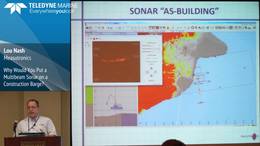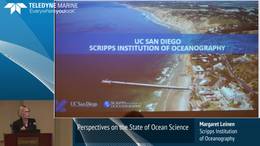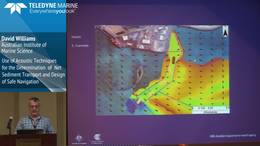Teledyne RESON SeaBat T-Series Multibeam Sonars and Turbidity in Real-Time During Dredge Operations
During most dredging operations, survey verification of having met grade and other contract requirements comes after the dredge has completed its work in a designated work area and hence moved on. What if the post-dredge survey reveals that the dredge has not fully met contract obligations? When this happens, the additional time, effort and expense to get the dredge back into position to remove what was missed can undermine the success of a project. What if the dredge operator could have “eyes under water” and confirm that grade requirements have been met before moving on?
During dredging operations, the material on the bottom is disturbed and released into the water column. Turbidity is a measure of the presence of suspended particulates. The more suspended solids in the water column, the higher the turbidity. High turbidity can create issues for sonar performance in that the suspended solids act as an acoustic reflector.
As barge mounted sonars are being used in the marine construction industry more frequently, dredge operators are considering the use of sonar to provide information in advance of post-dredge surveys. The “As-Building” benefits can be substantial but there is a concern over the effect turbidity can have on the acoustics.
Utilizing the Teledyne RESON SeaBat T-Series advanced bottom tracking abilities in various dredging operations, with varied levels of turbidity, we have begun to both demonstrate the value and quantify the limits of sonar usage during dredging operations. This presentation presents our results thus far.
During dredging operations, the material on the bottom is disturbed and released into the water column. Turbidity is a measure of the presence of suspended particulates. The more suspended solids in the water column, the higher the turbidity. High turbidity can create issues for sonar performance in that the suspended solids act as an acoustic reflector.
As barge mounted sonars are being used in the marine construction industry more frequently, dredge operators are considering the use of sonar to provide information in advance of post-dredge surveys. The “As-Building” benefits can be substantial but there is a concern over the effect turbidity can have on the acoustics.
Utilizing the Teledyne RESON SeaBat T-Series advanced bottom tracking abilities in various dredging operations, with varied levels of turbidity, we have begun to both demonstrate the value and quantify the limits of sonar usage during dredging operations. This presentation presents our results thus far.
Presented by:
Keith Dixon
Measutronics Corporation
At Teledyne Marine Technology Workshop 2019






